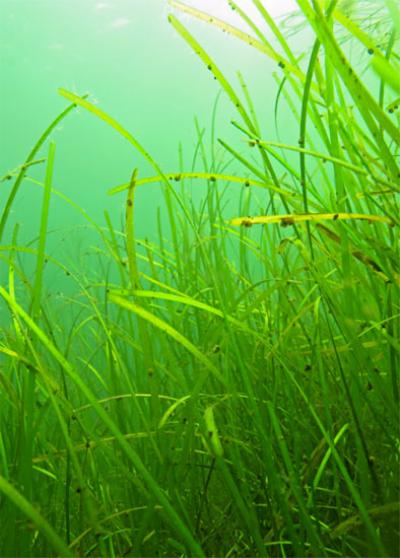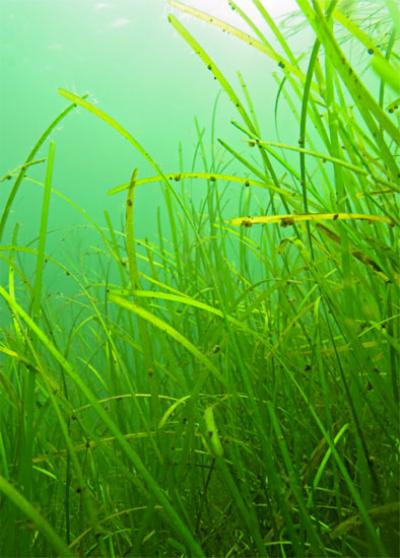
Credit: © Christoffer Boström/Åbo Akademi University
In a new study spanning coastal areas of the Northern Hemisphere, a coordinated researcher network led by MSc Emilia Röhr, Assoc. Prof. Christoffer Boström from Åbo Akademi University and Prof. Marianne Holmer from University of Southern Denmark explored the magnitude of organic carbon stocks stored and sequestered by eelgrass (Zostera marina) meadows–the most abundant seagrass species in temperate waters.
"We discovered that eelgrass organic carbon stocks were comparable to organic carbon stocks of tropical seagrass species, as well as mangroves, saltmarshes and terrestrial ecosystems", Emilia Röhr says.
On average, eelgrass meadows stored 27.2 tons of organic carbon per hectare, although the variation between the regions was considerable (from three to 265 tons per hectare). Hotspots for carbon sequestration were identified especially in the Kattegat-Skagerrak region, and southern parts of the Baltic Sea where the organic carbon stocks were over eight times higher, than in the Archipelago Sea of Finland.
The high carbon storage capacity of eelgrass meadows urges for protection and restoration of this unique ecosystem. Especially in the areas with the highest carbon stock capacity, they deserve recognition as part of global carbon marketing programmes.
"Terrestrial forests are well known for their capacity to store carbon (green carbon), while the so-called blue carbon stored and sequestered by coastal vegetated ecosystems, such as mangroves, saltmarshes, macroalgae and seagrasses, have received much less attention", says Röhr.
"Although these cover only 0.5 % of the seafloor, their carbon storage capacity accounts for more than 55 % of the carbon stored by photosynthetic activity on Earth."
In the marine systems, the blue carbon species alone account for up to 33 % of the total oceanic CO2 uptake. In contrast to terrestrial soils, which usually store carbon up to decades, the carbon stored in blue carbon ecosystems may persist for timescales of millennia or longer and thus, contribute significantly to climate change mitigation and alleviation of the rising atmospheric carbon dioxide concentrations. Despite the importance of these ecosystems, to date, none of them are included in the global carbon trading programmes. Alarmingly, in the past 50 years, at least 1/3rd of the distribution area of coastal vegetated ecosystems has been lost.
###
Read more in The Conversation: https://theconversation.com/we-desperately-need-to-store-more-carbon-seagrass-could-be-the-answer-105524
More information:
Emilia Röhr
Doctoral student in Environmental and Marine Biology at Åbo Akademi University
Email: [email protected]
Tel.: +358 45 651 9960
Christoffer Boström
Associate Professor in Environmental and Marine Biology at Åbo Akademi University
Email: [email protected]
Tel: +358 50 431 8226
Marianne Holmer
Professor at University of Southern Denmark
Email: [email protected]
Tel.: +45 6011 2605
Media Contact
Emilia Röhr
[email protected]
358-456-519-960
@aboakademi
http://www.abo.fi/en
Original Source
https://doi.org/10.1029/2018GB005941 http://dx.doi.org/10.1029/2018GB005941





